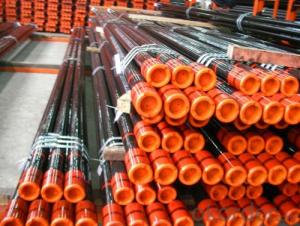When it comes to building or renovating a structure, steel reinforcement is a crucial component that ensures the strength and durability of the construction. But, have you ever wondered what influences the cost of steel reinforcement? Let’s dive into the factors that can make a significant difference in the price you pay for this essential building material.
The Role of Steel Reinforcement in Construction
Before we get into the factors affecting the price, it’s important to understand the role of steel reinforcement in construction. Steel reinforcement, often referred to as rebar, is used to strengthen concrete structures. It provides tensile strength, which concrete lacks, allowing the structure to withstand various forces such as tension, bending, and torsion.
Market Demand and Supply Dynamics
One of the primary factors that influence the cost of steel reinforcement is the market demand and supply dynamics. When there’s a high demand for steel in the construction industry, the prices tend to rise. Conversely, when the demand is low, the prices may decrease. This fluctuation is also affected by the supply of raw materials used to produce steel, such as iron ore and coal.
Raw Material Costs
The cost of raw materials is another significant factor. Steel is primarily made from iron ore and coal. If the prices of these materials increase, the cost of steel reinforcement will also go up. Additionally, the transportation costs of these raw materials can also affect the final price of steel reinforcement.
Production Costs
Production costs play a vital role in determining the price of steel reinforcement. This includes labor costs, energy costs, and the cost of machinery and equipment used in the production process. If these costs increase, the price of steel reinforcement is likely to rise as well.
Government Policies and Regulations
Government policies and regulations can also have an impact on the cost of steel reinforcement. For instance, if the government imposes tariffs on imported steel, the cost of steel reinforcement may increase. Similarly, environmental regulations can affect the production process and, consequently, the cost of steel.
Technological Advancements
Technological advancements in the steel industry can lead to more efficient production methods, which can reduce the cost of steel reinforcement. However, the initial investment in new technology can be high, and this cost may be passed on to the consumers.
Economic Factors
Economic factors such as inflation, currency exchange rates, and the overall health of the economy can also influence the cost of steel reinforcement. For example, if the economy is experiencing inflation, the prices of goods, including steel reinforcement, are likely to increase.
Regional Differences
There can be regional differences in the cost of steel reinforcement due to various factors such as local demand, production costs, and transportation costs. It’s essential to consider these differences when planning a construction project.
Quality and Grade of Steel
The quality and grade of steel reinforcement can also affect its price. Higher grade steel, which offers better strength and durability, will typically cost more than lower grade steel.
Import and Export Factors
Lastly, import and export factors can influence the cost of steel reinforcement. If a country relies heavily on imported steel, any changes in trade policies or tariffs can significantly impact the price.
In conclusion, the cost of steel reinforcement is influenced by a multitude of factors, ranging from market dynamics to government policies. As a construction professional or someone planning a construction project, it’s crucial to be aware of these factors to make informed decisions and manage costs effectively. Remember, the strength of your structure depends on the quality of the steel reinforcement you choose, so don’t compromise on this critical aspect of your project.

